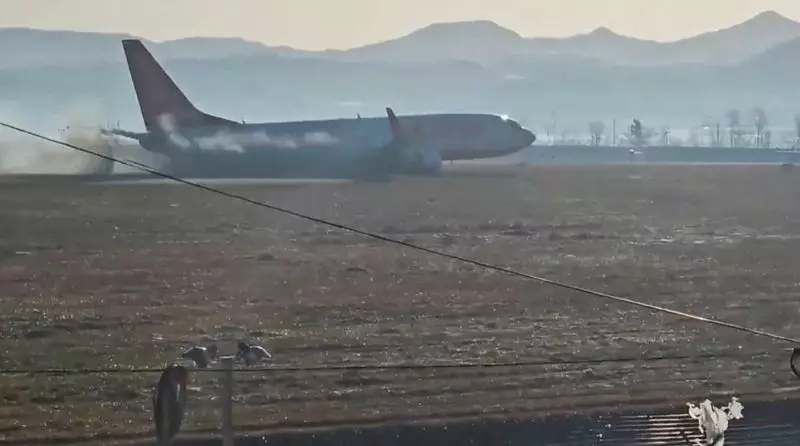The recent crash of Jeju Air Flight 7C2216 at Muan International Airport has become South Korea’s deadliest aviation disaster, claiming 179 out of 181 lives on board. As investigators sift through the wreckage and dive into the details surrounding the tragic event, numerous questions and uncertainties loom over the causes and contributing factors of the crash. Was the potential bird strike just a symptom of a more significant underlying problem, and how did the aircraft end up belly landing without deployed landing gear? Understanding these occurrences might prove challenging, as experts from varying backgrounds attempt to piece the puzzle together.
Early reports indicate that mere minutes before the crash, the control tower had issued a bird strike warning, followed by the pilots’ declaration of mayday. This rapid sequence of events is concerning and raises questions about the aircraft’s handling and decision-making in a situation that escalated quickly. Eyewitness reports and video footage depict the Boeing 737-800 descending rapidly with no landing gear, skidding on its belly before crashing into a wall, resulting in an explosion of flames and debris. Such visual evidence highlights a critical issue: the nuanced yet vital role of the landing gear failure in aviation safety.
A bird strike is often perceived as a routine hazard in aviation, with many flights encountering such situations without serious consequences. However, a bird strike could also have catastrophic implications, particularly when the aircraft is ill-prepared. The suggestion that a bird could have caused a significant impact raises skepticism. Aviation experts highlight that while an incident involving birds could influence engine performance, it rarely leads to an entire aircraft’s loss. Thus, the nuances of the event, including whether birds were indeed struck and their potential effect on flight control, must be scrutinized through meticulous investigation.
Technical experts have also expressed concerns regarding the absence of activated braking systems during the landing. Christian Beckert, a seasoned pilot and flight safety expert, pointed out that the lack of deployed braking mechanisms combined with the apparent overspeed at landing raises alarms about pilot response in crisis conditions. Multiple independent fail-safe systems are designed to ensure gear deployment, making it extremely uncommon for such failures to occur without significant prelude issues. The investigation must delve into the state of the airplane’s systems and pilot performance, creating a narrative that explains the anomalies.
Human error is often a central theme in aviation accidents, and with information emerging about the respective experience levels of the pilots, the figure of negligence or accountability cannot be overlooked. The captain and first officer’s collective experience brings into question their decision-making processes under pressure, especially given their varied hours logged. As aviation operations heavily depend on a crew’s ability to respond swiftly and appropriately to failed systems, understanding the cockpit dynamics during the incident becomes pivotal. The late decision to land from an alternate approach could have added unnecessary complications, amplifying the pressure under which the pilots operated.
International aviation rules stipulate that South Korea must lead the investigation, involving U.S. bodies due to the American manufacture of the aircraft. However, accidents such as this call for a multifaceted approach, incorporating insights from diverse aviation professionals to unearth truths buried in technical details. The challenges posed during the initial phases of the investigation must be dissected, as critical evidence is often lost or corrupted over time. Continued cooperation among global aviation authorities could, therefore, prove beneficial in honing in on the causative factors that will shape future protocol and safety regulations.
This tragic incident serves as a sobering reminder of the complexities entwined in aviation safety. With many questions remaining unanswered—from the technical failures to human decision-making—this crash underscores the essential need for continued vigilance in the face of risks that aviation professionals encounter daily. The loss of lives is a tragic outcome that must not be outweighed by the lessons learnt. The Jeju Air crash will become pivotal in shaping future policies as the aviation industry grapples with understanding its root causes and ensuring safety remains paramount.

